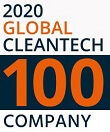
According to the United Nations, the world is projected to construct 2.3 trillion square meters of new buildings by 2060; that’s the equivalent of adding an entire New York City to the planet every 34 days for the next 40 years. In the global fight against climate change, emissions from construction—nearly 40% of total global CO2 emissions every year—must be addressed to create lasting change. In the “concrete jungle” of New York, emissions resulting from this demand for development are being curbed through key synergistic legislation.
In conjunction with the start of Climate Week in September 2023, the Port Authority of New York and New Jersey released a Roadmap to Net-Zero, comprised of over 40 recommended actions focusing on the agency’s target of reducing direct emissions by 50% by 2030, and achieving net-zero greenhouse gas (GHG) emissions by 2050. The roadmap outlines recommended courses of action for both Port Authority-controlled emission sources and stakeholders’ emissions outside of agency control. This roadmap is informed by years of legislative efforts to promote low-carbon construction, particularly through the use of low-carbon concrete.
In 2021, the New York state legislature passed the Low Embodied Carbon Concrete Leadership Act (LECCLA), calling for the state’s Office of General Services to convene a stakeholder group in order to develop a system for reducing embodied carbon in concrete with optimized price and climate performance; this includes recommending performance incentives and policy updates. The ultimate goal of the stakeholder group is a developed emissions standard for concrete used in statewide public works projects. In the following years, similar LECCLA-inspired procurement legislation was enacted in New Jersey, Massachusetts, and Virginia.
New York City Mayor Eric Adams also moved toward reducing GHG emissions and embodied carbon in city construction, signing a clean construction executive order in September 2022 that requires low-carbon concrete specification, Environmental Product Declarations (EPDs), low-emission vehicles and equipment use, and Life Cycle Assessments (LCAs) for all publicly-funded NYC construction projects. This is in line with the City of New York’s established 80/50 goal to reduce its GHG emissions, compared to 2005 levels, by 80% by 2050.
At the state level in New York, reduced emissions in construction are further promoted through Buy Clean legislation that places limits on embodied carbon resulting from material use of concrete in state-funded public building and transportation projects. These guidelines, enacted by Governor Kathy Hochul in September 2023, were developed by New York State Energy Research and Development Authority in conjunction with the Office of General Services.
In a national first, New York will mandate the use of publicly available EPDs demonstrating adherence to environmental impact limits for public construction materials by 2025, including for all concrete mixes. This Buy Clean legislature makes a significant contribution to the Port Authority Net-Zero Roadmap, especially considering the strides that must be taken toward decarbonizing concrete and developing low-carbon concrete mix design requirements.
An Engineering News-Record article describes the Port Authority’s June 2023 inclusion of new, “industry-leading” low-carbon concrete mix design requirements and recommendations for public works projects in New York and New Jersey: “For the last two years, the authority has partnered with Rutgers University, New Jersey Institute of Technology, Princeton University and New York University to create and test concrete mixes with different recycled materials. The agency says it has identified 18 concrete recipes that can reduce emissions by up to 37% compared to its previous batches of low-carbon concrete mixes.”
With new legislation being regularly brought to the table, New York presents a singular example of how legislation can make a difference in material choice, ultimately reducing the embodied carbon emissions of public construction and setting a valuable precedent. At CarbiCrete, the development of low-carbon concrete that includes no cement, incorporates recycled industrial byproduct steel slag, and meets all standards and requirements for precast concrete use provides a ready-to-use alternative to conventional cement-based concrete that can help New York transform its built environment.



